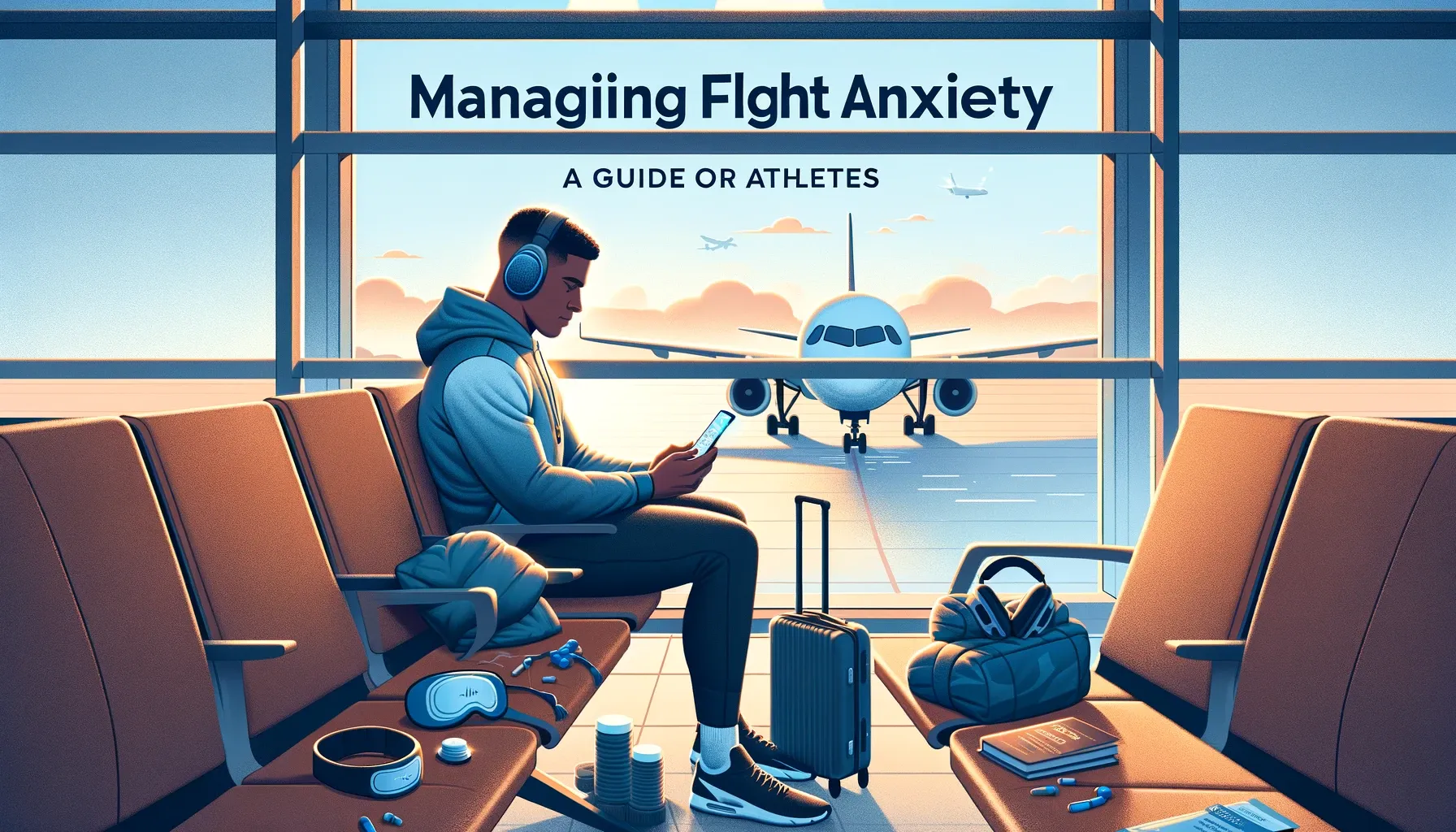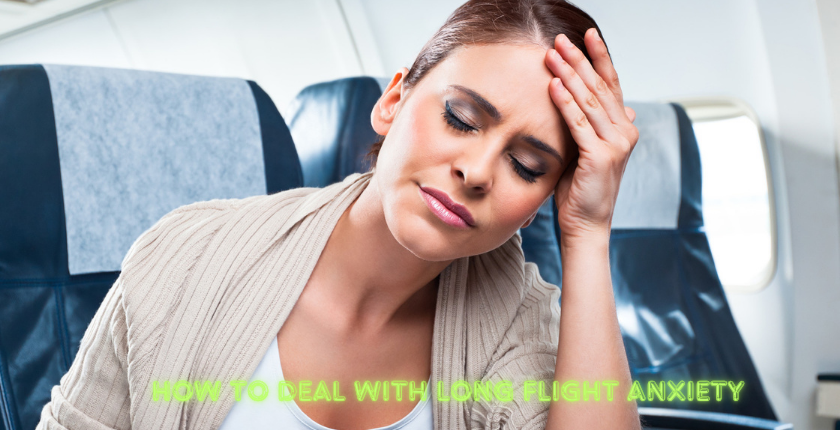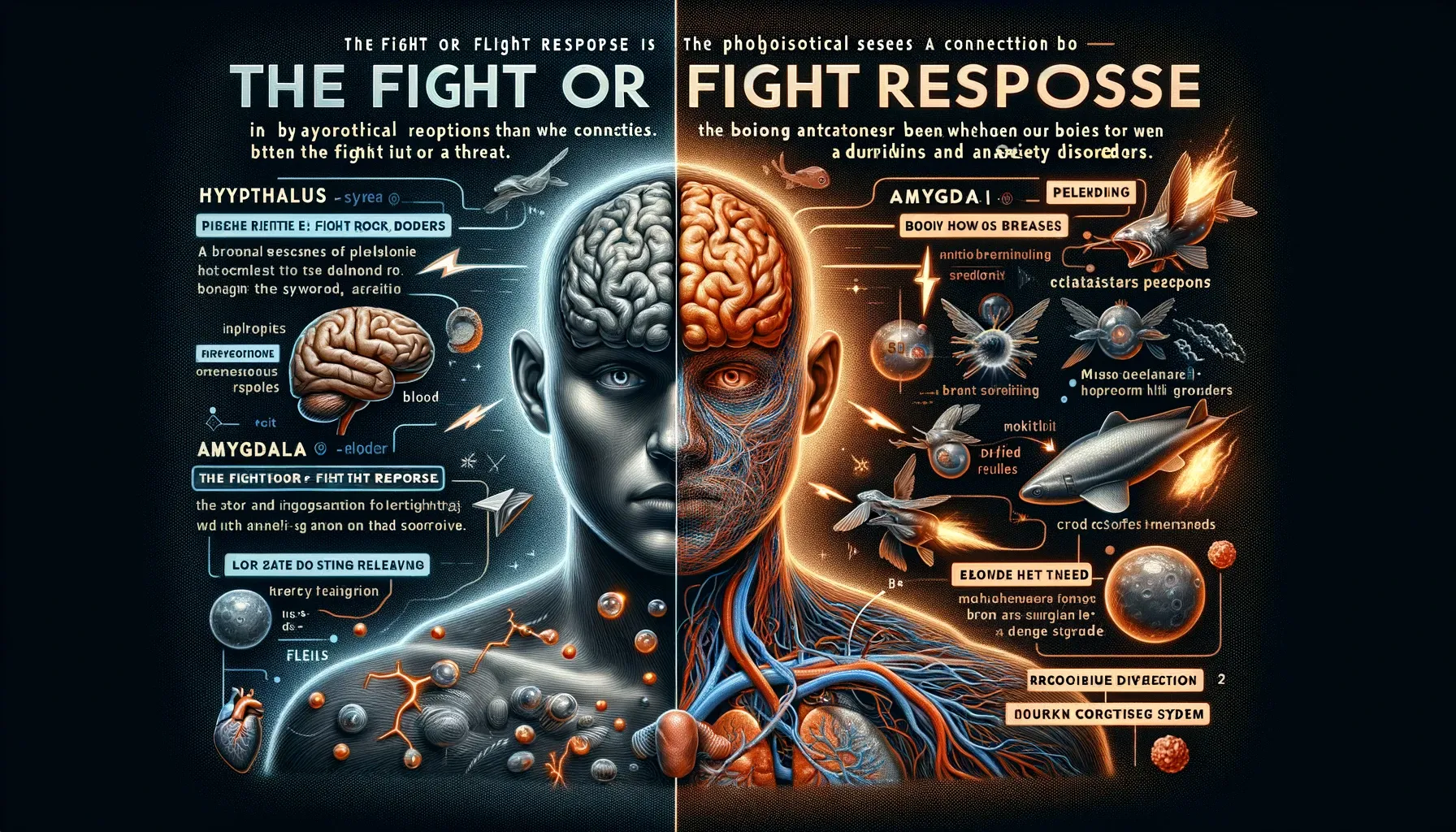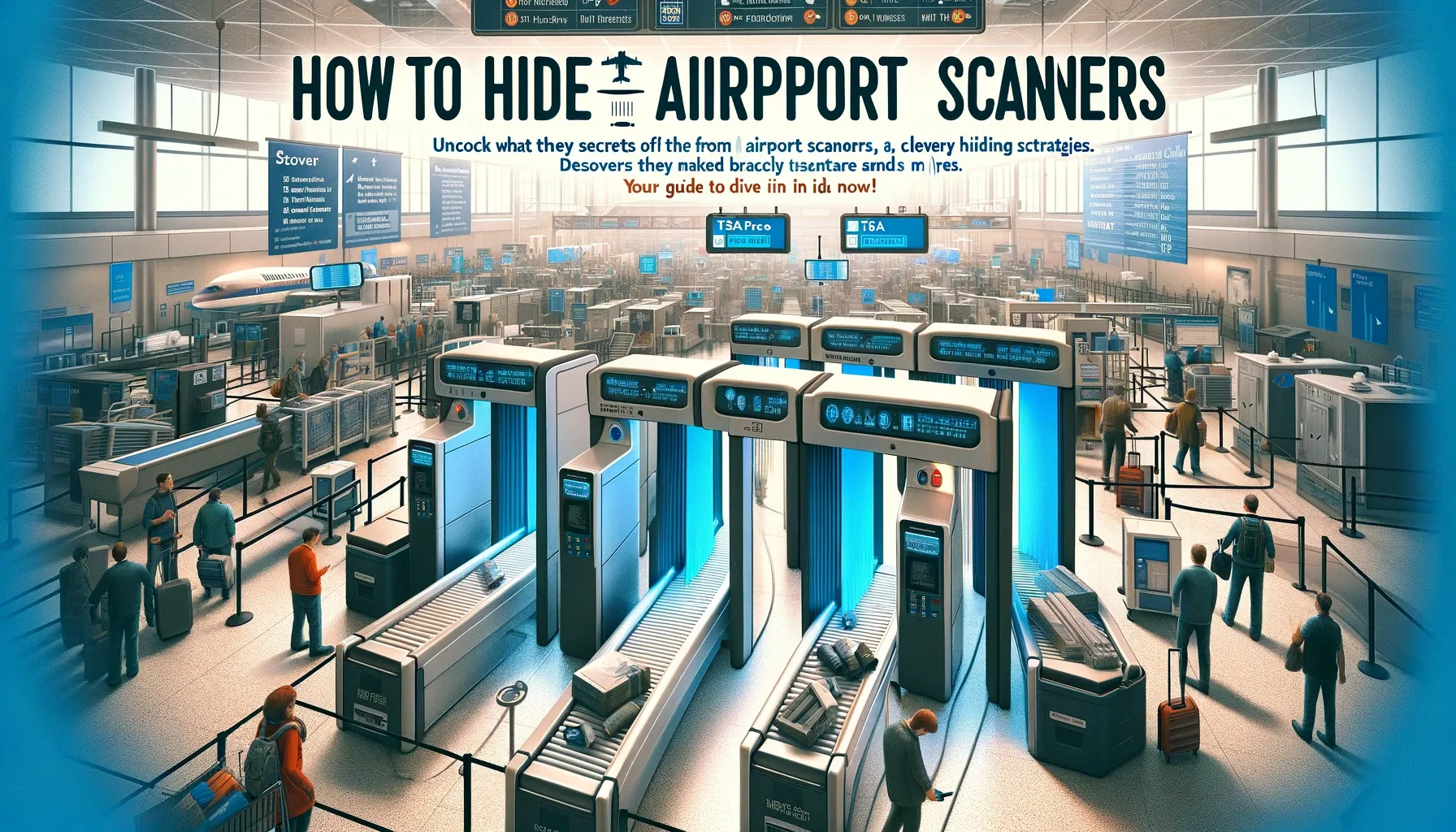Table of Contents
Discover Some Techniques and Tools that Athletes Use to Manage Flight Anxiety. From relaxation skills to comforting items, unlock the secrets to peak performance in the air.
For professional athletes who travel frequently for competitions and games, flight anxiety can be a real issue that impacts performance. Managing anxiety surrounding air travel is critical for athletes to stay mentally sharp. In this comprehensive guide, we will explore the most effective Techniques and Tools that Athletes Use to Manage Flight Anxiety.
What is Flight Anxiety in Athletes?

Flight anxiety, also known as aviophobia or aerophobia, involves fear and stress surrounding air travel. Symptoms can include panic attacks, nausea, trembling, and an overwhelming sense of dread when boarding planes.
Athletes face heavy travel demands, especially for away games and matches. The constant flying can lead to associating planes with pressure, disrupted routines, and performance anxiety. Additionally, high-profile athletes often fear flying less for safety reasons and more for privacy and loss of control.
Managing these flight anxieties is essential so athletes arrive at their destinations mentally prepared and focused. The techniques and tools covered in this guide can help athletes minimize fear, relax during flights, and land ready to compete at their highest level.
Relaxation Techniques For the Athlete To Manage Flight Anxiety
Learning effective relaxation skills is key for athletes to control flight anxiety symptoms like rapid heart rate, shakiness, and intrusive thoughts. Relaxation training should begin weeks or months before heavy travel seasons. Helpful techniques include:
Deep Breathing

Taking slow, deep belly breaths triggers the relaxation response and lowers blood pressure and heart rate. Inhale deeply through the nose, hold for 5 seconds, and slowly exhale out the mouth. Repeat continuously when anxious.
Progressive Muscle Relaxation
Tense and release muscle groups throughout the body to reduce tension. Alternately tighten and relax the legs, arms, back, and face for full-body calm.
Meditation
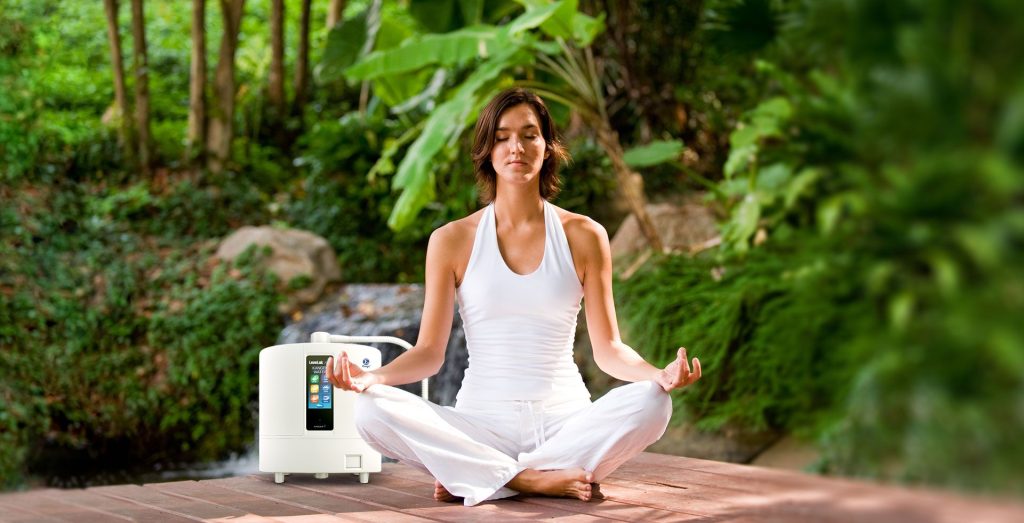
Practices like mindfulness meditation teach focusing on the present. Apps like Calm provide guided meditations athletes can listen to during stressful parts of flying.
Visualization
Picture yourself calmly going through flights from start to finish. Visualizing future success can create feelings of confidence and familiarity.
Positive Self-Talk
Counter anxious thoughts with affirmations like “I feel at ease with every breath” and “I am safe, relaxed, and calm”. Avoid catastrophizing language.
Learning these techniques well before travel allows athletes to respond confidently when flight anxiety strikes. Having relaxation “tools” in your mental toolkit prepares you to compete at the top level despite the stresses of frequent flying.
Read also: How to Deal with Long Flight Anxiety
Tools that athletes use to Manage flight anxiety
In addition to relaxation skills, athletes can also bring items that provide physical and mental comfort during flights:
Noise-canceling Headphones
Listening to soothing music helps drown out flight noise and distractions. Noise cancellation further aids focus.
Eye Mask
Blocking out surroundings helps you rest, visualize, and manage sensations. Look for contoured masks that prevent light leakage.
Travel Pillow
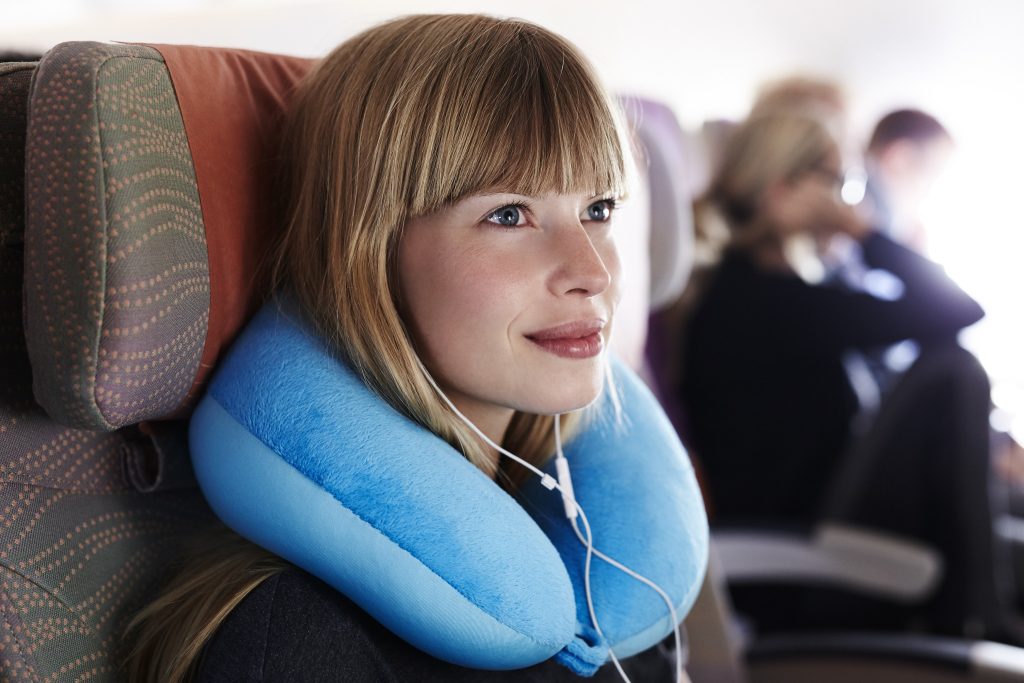
Soft pillows allow resting more comfortably upright on planes. Some models have raised sides for head support.
Favorite Book or Movie
Download engrossing entertainment to divert focus from anxious thoughts during the flight.
Stress Ball
Squeezing a soft stress ball can relieve tension. Small, discrete sizes are ideal for travel.
Fidget Item
Items like fidget spinners give restless hands something to play with calmly.
Comforting Scents
Bring relaxing aromatherapy scents like lavender oil or scented lotion. Inhale calming fragrances when anxious.
Having these portable items on hand allows immediate soothing of nerves during in-flight stress. The more senses comforted, the easier to relax.
Medications For Athlete To Reduce Flight Anxiety
For moderate to severe flight anxiety, athletes may discuss prescription anti-anxiety medications with doctors. These can provide added assistance in managing symptoms, especially during long or turbulent flights.
Benzodiazepines
Medications like Xanax provide relaxing, sedative effects but may cause drowsiness.
Beta-blockers
Beta-blockers like Inderal lessen physical anxiety symptoms. Potential side effects include low blood pressure and reduced endurance.
Antihistamines
Non-drowsy antihistamines like Dramamine prevent nausea, a common anxiety symptom.
Athletes must consult physicians and sports medicine staff before taking medications that may impact performance. Using only as truly needed, with proper oversight, can aid anxiety while minimizing effects.
Seeking Outside Support
For ongoing struggles with flight phobia, working with a mental health professional can help identify the roots of fears and build cognitive tools.
Cognitive Behavioral Therapy (CBT)
CBT is effective at changing negative thought patterns that feed anxiety. Athletes learn to reframe catastrophizing inner dialogue.
Exposure Therapy
Gradually increasing time spent around airports/planes in a controlled manner can desensitize fear.
Anxiety Management Training
Psychologists provide techniques to reduce anxiety like thought stopping, modeling confidence, and positive reinforcement.
Seeking outside anxiety relief expertise equips athletes with new psychological skills that get reinforced with practice over time. Together with self-care techniques, athletes gain control over travel-related anxiety impacts.
Tips For Athletes to Minimize Flight Anxiety
Athletes can also minimize flight anxiety by taking greater control surrounding travel:
- Book direct flights without layovers when possible.
- Upgrade to first class or business for more space and comfort.
- Travel with familiar teammates or staff.
- Keep the same travel routines for reassurance.
- Avoid alcohol and heavy meals pre-flight.
- Stay well hydrated pre and during flights.
- Arrive early to navigate airports calmly.
Exercising more influence over travel plans results in a greater sense of confidence and predictability.
Final Words
Frequent flying can be a major trigger of anxiety for professional and elite amateur athletes who compete while traveling often. Learning to manage flight anxiety is critical for optimal performance.
Using proven techniques like focused breathing, relaxation skills, comforting items, and therapy yields significant control over anxious thoughts, emotions, and physical symptoms while airborne. Athletes can land ready to excel.
With the right preparation and support, athletes can thrive with the demands of a travel-heavy competitive schedule. Don’t let flight anxiety weaken your game.

